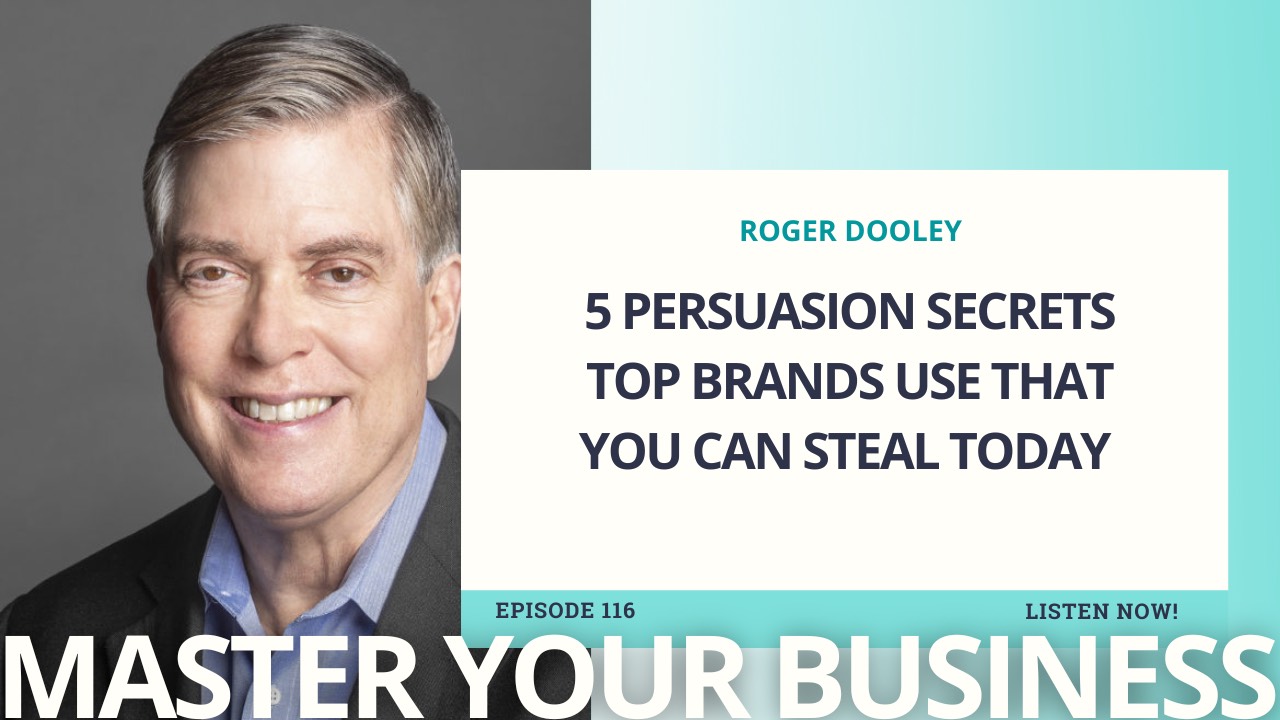
The Emotional Rollercoaster of Buying (and How to Guide Your Clients to "Yes!" )
Listen on Spotify | Listen on Apple Podcasts
Timestamps:
[00:00] Introduction
[03:55] Why Emotion Matters More Than Logic
[08:05] The Emotional Stages of Buying
[14:22] The Feel-Good Tool-Kit
The Emotional Rollercoaster of Buying (and How to Guide Your Clients to "Yes!")
On the Master Your Business Podcast, Deirdre Martin delves into the thrilling, but often nerve-wracking emotional journey clients face when making buying decisions. Whether you’re a service provider, coach, or creative, understanding the emotional impact of your clients’ decisions can be transformative for your business. Keep reading, or tune in for a breakdown of actionable insights on guiding clients to a confident “yes” and keeping them feeling satisfied long after the sale.
Why Emotions Matter More Than Logic in Buying Decisions
For buyers, purchasing decisions are rarely just logical; they’re a highly emotional experience. Building a successful relationship with your clients means recognising and addressing these emotions. When you can anticipate how your clients feel—from excitement to hesitation—you’re far better positioned to engage meaningfully and provide solutions that feel safe, trustworthy, and compelling.
“When you meet people where they’re at emotionally, it makes them feel understood. That’s where trust and connection start.”
How to Map Out Your Buyer’s Emotional Journey
Understanding your client’s journey from pre-purchase to post-purchase lets you shape an emotionally resonant experience. By mapping out these stages, you can pinpoint where clients may feel anxious or uncertain and create moments of reassurance and value at each step.
Key phases in the buyer’s journey include:
- Pre-Purchase – Potential clients often feel a mix of curiosity, excitement, and hesitancy. This is your chance to meet them where they are, acknowledging their interests and concerns.
- Decision-Making – As clients move closer to saying “yes,” nerves can set in. Providing clarity, value, and support here can make all the difference.
- Post-Purchase – The relationship doesn’t end with a sale. Instead, the goal is building trust, nurturing satisfaction, and mitigating “buyer’s remorse” through continuous engagement and support.
Crafting a Feel-Good Marketing Toolkit
Creating emotionally resonant marketing materials doesn’t have to be complicated. Here’s a toolkit for crafting messages that build emotional resonance and rapport:
- Storytelling – Share authentic struggles and successes that your clients relate to. For example, a relatable LinkedIn post capturing clients' thoughts or internal monologue can make them feel seen.
- Before-and-After Scenarios – Paint a picture of a client’s journey to success by illustrating where they were before, what steps you took together, and the results they achieved.
- Frameworks for Emotion – Try storytelling structures like STAR (Situation, Task, Action, Result) or SCAR (Situation, Challenge, Action, Result), adding “E” for Emotion to make it “STARE” or “SCARE.” This framework ensures you weave feelings into every story phase, enhancing relatability.
Harnessing Empathy Through Language and Visuals
Your language and visuals are potent tools for building empathy. From using “we” language that implies a shared journey to addressing clients directly as “you,” creating a sense of empathy in your content allows clients to see themselves in your brand.
Visuals are equally powerful. Images can evoke ambition, calm, or excitement, setting a tone that resonates emotionally. Visual storytelling helps potential clients envision their journey with you and builds anticipation for success.
Building Long-Term Emotional Connections Post-Purchase
A successful client relationship goes beyond the initial sale. Nurturing these connections post-purchase is vital for fostering loyalty and trust. Here’s how:
- Follow-Up with Value – Send personalised messages and check-ins, offering encouragement and celebrating client milestones.
- Offer Ongoing Engagement Opportunities – Provide upsells, renewals, or community resources that keep clients connected to your brand and remind them why they value your service.
- Create a Sense of Belonging – Community and a sense of belonging are key parts of Maslow’s hierarchy of needs. Your clients will appreciate feeling part of a group where they can share experiences, celebrate wins, and seek advice.
Mapping the Customer Journey for Emotional Impact
An invaluable tool to align with this approach is a Customer Journey Map, a structured way to identify emotional touchpoints along the customer’s path. Planning for each stage ensures clients feel cared for, valued, and empowered throughout their experience. This helps prevent “buyer’s remorse” and builds a foundation for long-term client satisfaction.
By understanding the emotional highs and lows that clients experience throughout their buying journey, you can create a customer experience that feels fulfilling, safe, and empowering. Each stage of the client’s journey is an opportunity to build trust, show empathy, and help them feel like part of your brand’s community.
Ready to explore the strategies behind emotional marketing more deeply? Listen to the full episode for even more insights and practical advice on guiding your clients to a confident “yes!”
Important Links:
Sign up for the Master Your Business Podcast Newsletter!
https://www.deirdremartin.ie/journey-map
https://www.simplypsychology.org/maslow.html








